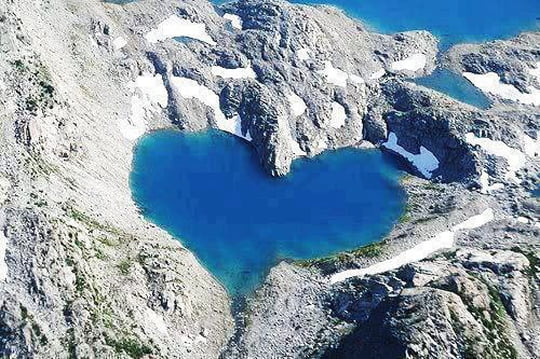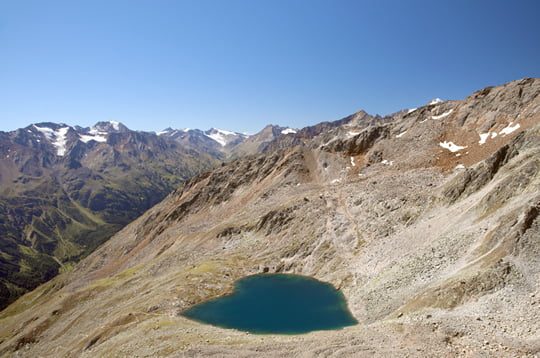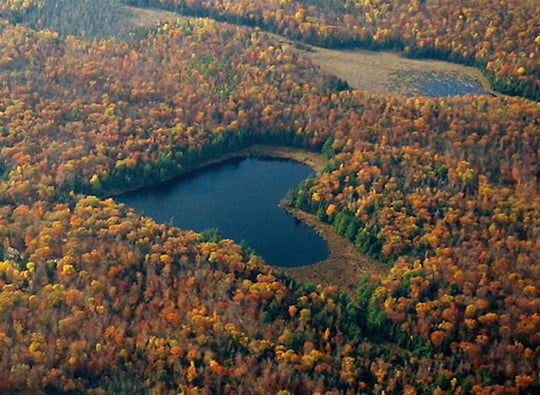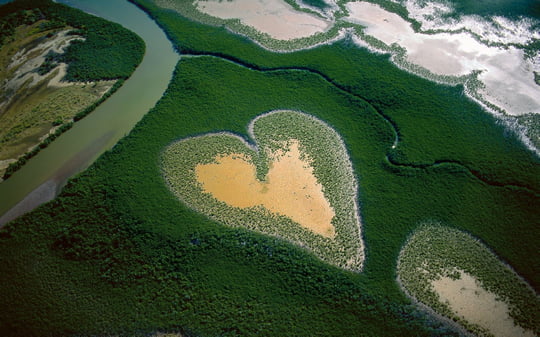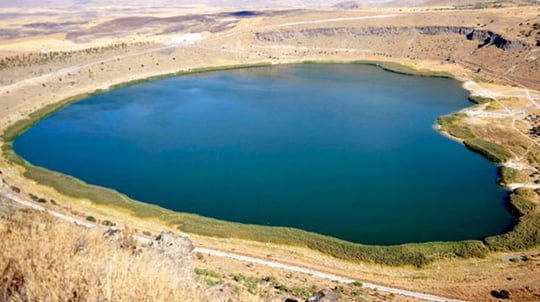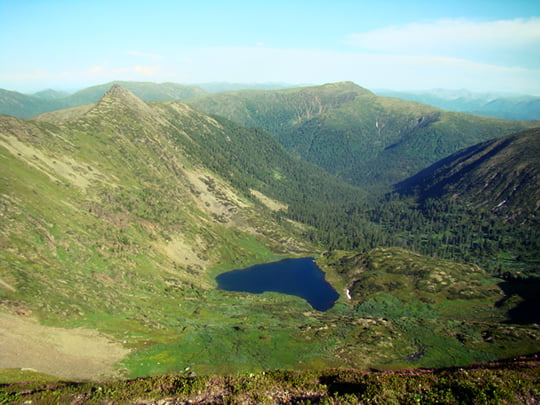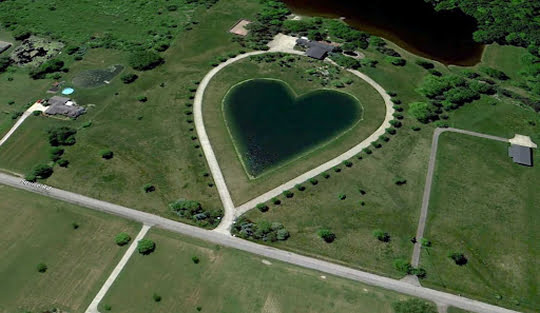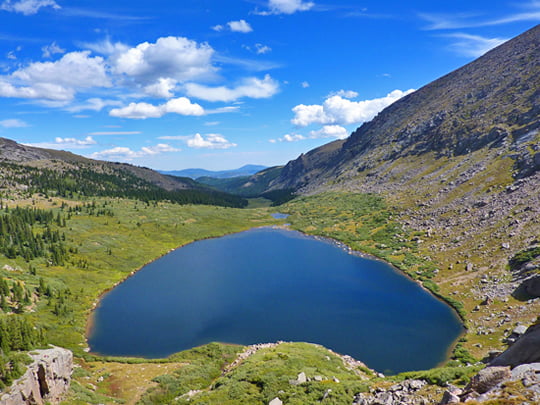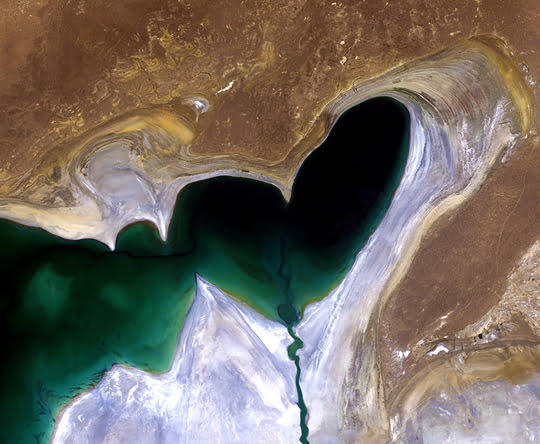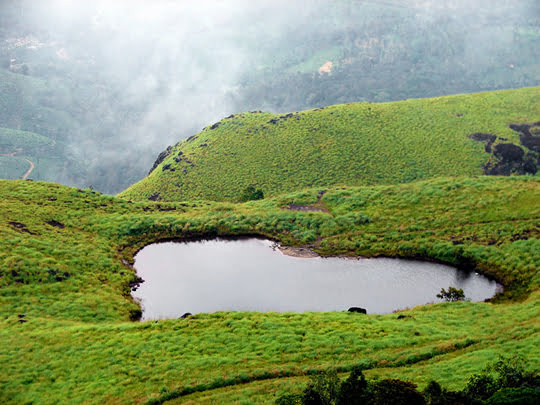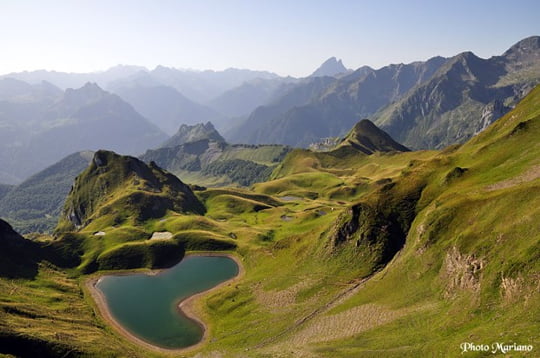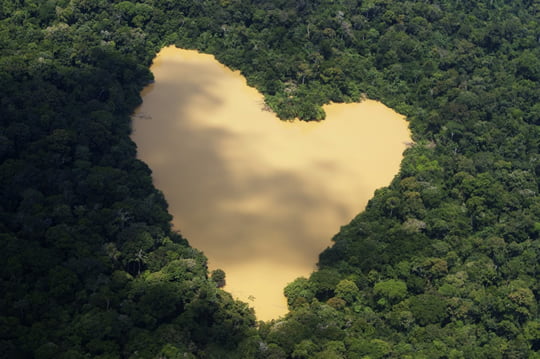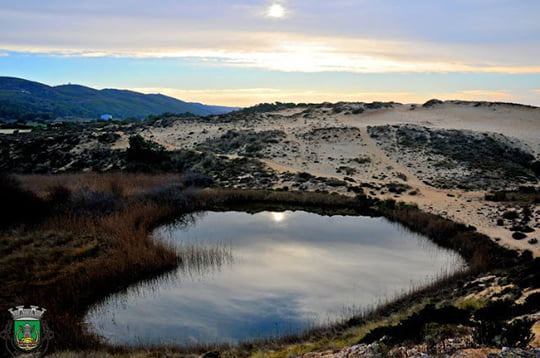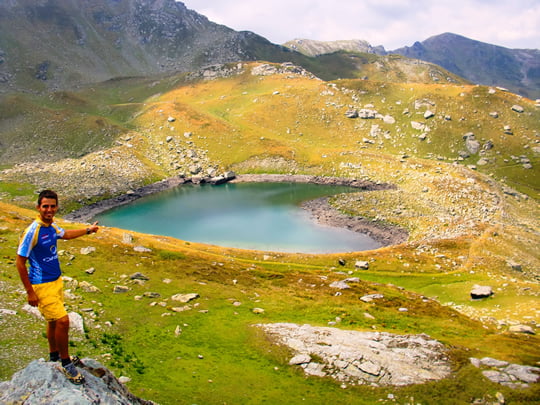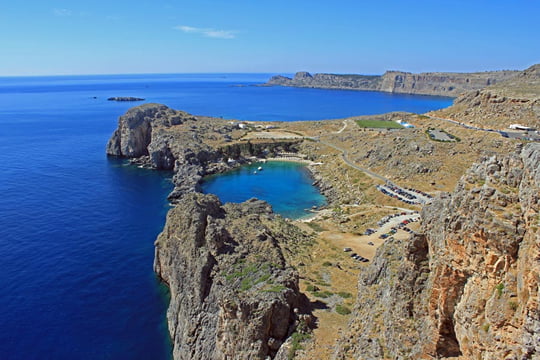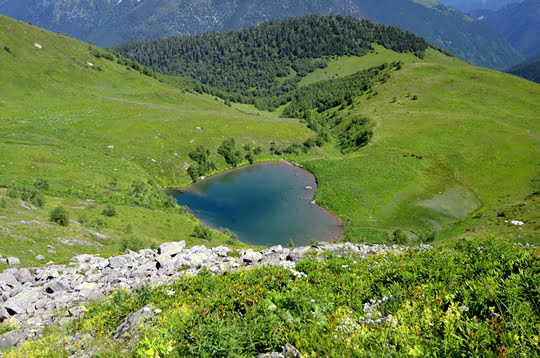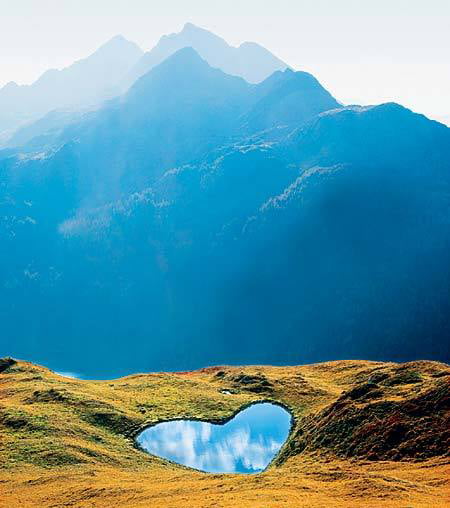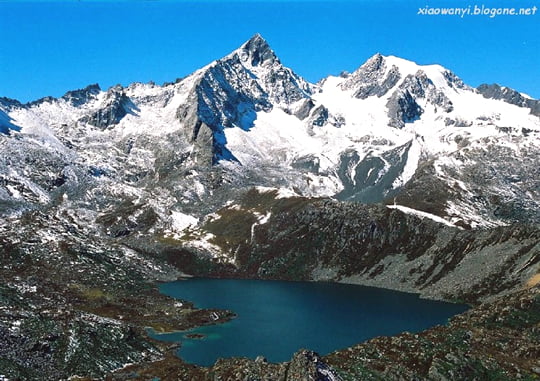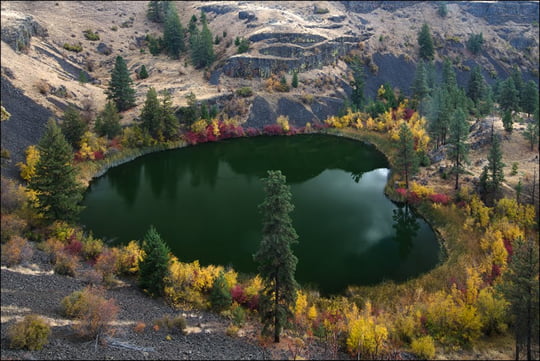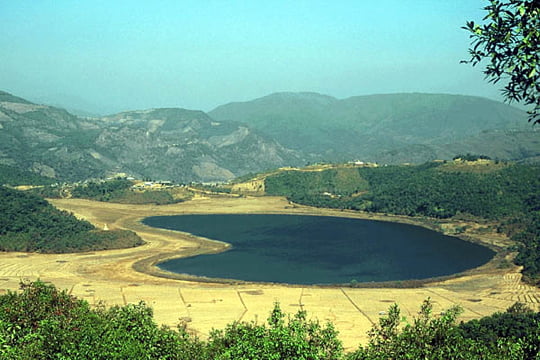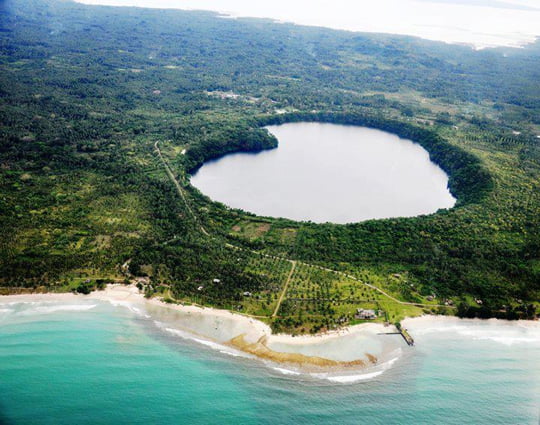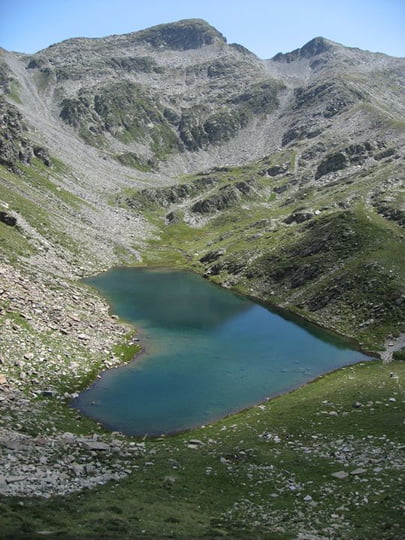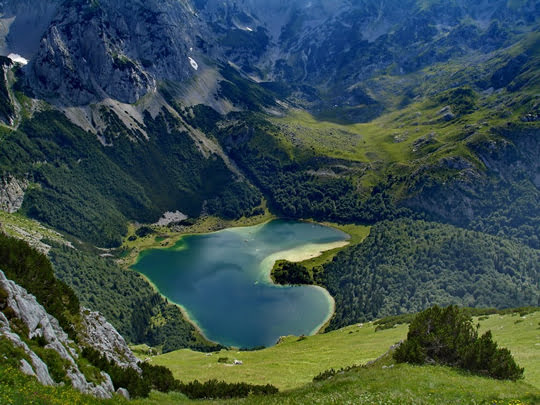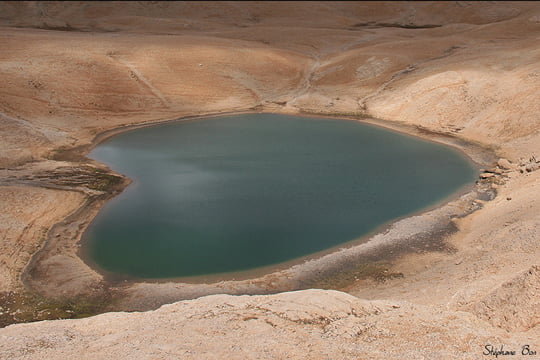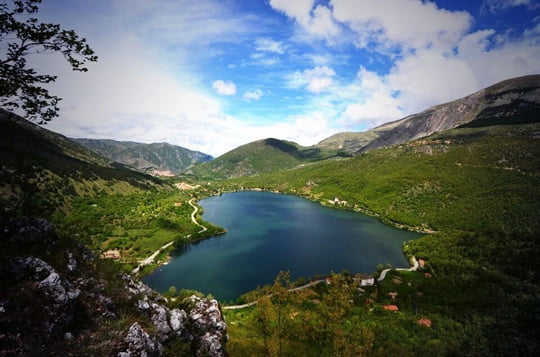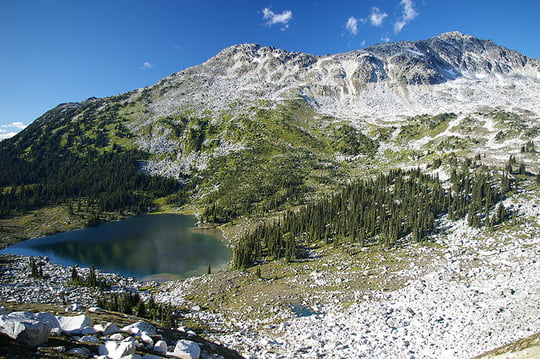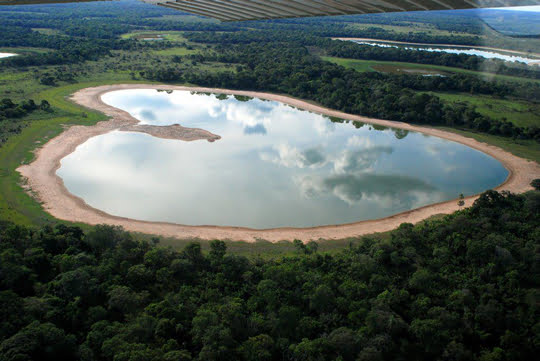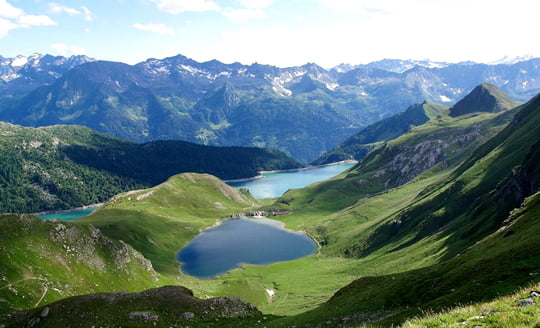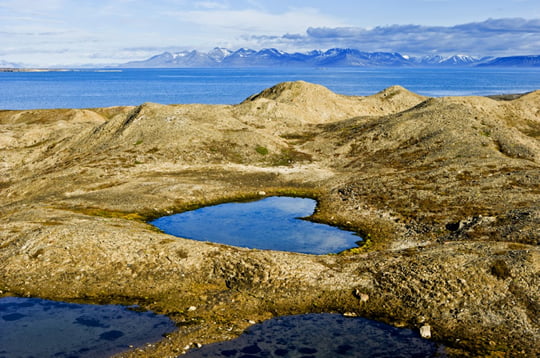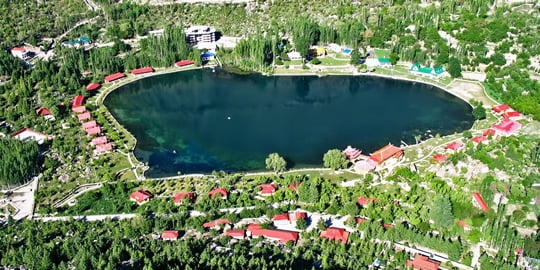The tiny, rock-hard fruits of Pollia condensata, a wild plant that grows in the forests of Ethiopia, Mozambique, Tanzania and other African countries, can’t be eaten raw, cooked or turned into a beverage. In Western Uganda and elsewhere, though, the plant’s small metallic fruits have long been used for decorative purposes because of an unusual property: They stay a vibrant blue color for years or even decades after they’ve been picked. A specimen at the Kew Botanical Gardens in London that was gathered in Ghana in 1974 still retains its iridescent hue.

Pollia condensata, native to Africa, uses nanoscale-sized structures to produce the most intense color ever studied in biological tissue.
Intrigued, a team of researchers from Kew, the University of Cambridge and the Smithsonian Natural History Museum decided to look into how this plant produces such a dazzling and persistent color. When they attempted to extract a pigment to study, though, they were surprised to discover the fruit had none.
When they examined P. condensata on a cellular level, they realized that the fruit produces its characteristic color through structural coloration, a radically different phenomenon that is well-documented in the animal kingdom but virtually unknown in plants. They determined that the fruit’s tissue is more intensely colored than any previously studied biological tissue—reflecting 30 percent of light, as compared to a silver mirror, making it more intense than even the renowned color of a Morpho butterfly’s wings. Their findings were revealed in a new study published 9 September 2012 in the Proceedings of the National Academy of Sciences.
The vast majority of colors in the biological world are produced by pigments—compounds produced by a living organism that selectively absorb certain wavelengths of light, so that they appear to be the color of whichever wavelengths they reflect. For example, most plants are green because of the pigment chlorophyll, used in photosynthesis, which absorbs most wavelengths of visible light except green, reflecting that color into our eyes. As a consequence, plant colors created by pigmentation appear to be the exact same hue no matter which angle we view them from, and the color degrades when the plant dies.
P. condensata, however, produces its vibrant blue via tiny, nanoscale-size cellulose strands that are stacked inside its skin. These strands are arranged in layers of twisting, arced helix shapes, which interact with each other to scatter light and produce the fruit’s deep blue coloration. Here’s a view of the fruit through an electron microscope, revealing the presence of the color on a cellular level:
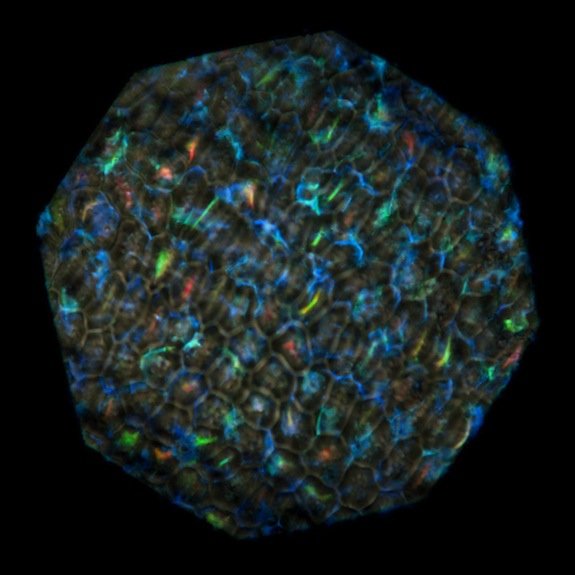
The plant’s deep blue hue is produced on a cellular level.
These strands also give the plant an even more fascinating quality, something that can (unfortunately) only be appreciated in person: Depending on how you hold the fruit and from what angle you view it, each of its skin cells actually appears to change color. This is because the distance between the stacked nanoscale fibers varies from cell to cell, so each cell produces a slightly different hue, reflecting light either to the left or right, depending on your vantage point. This accounts for its striking, pixellated appearance:

Each skin cell produces a slightly different color, leading to the fruit’s pixellated effect.
The reason the fruit’s color lasts so remarkably long, it turns out, is because its color is built into its structure, rather than relying on pigments that can degrade over time. Researchers have reported seeing vibrant blue fruits hanging on dried-up, dead P. condensata stems in the field.
The research team also took a stab at explaining why the plant would go to such trouble to evolve a striking color—deception. By imitating the appearance of a juicy, nutritious plant, the color can trick birds and animals into eating the fruit, thereby widely dispersing the seeds inside when they defecate.
Although using animals for dispersal is a strategy common to many plants, most are forced to devote precious calories to produce a sweet, fleshy pulp. P. condensata, however, is able to spread its seeds simply by showing its true colors.
Source
READ MORE»

Pollia condensata, native to Africa, uses nanoscale-sized structures to produce the most intense color ever studied in biological tissue.
Intrigued, a team of researchers from Kew, the University of Cambridge and the Smithsonian Natural History Museum decided to look into how this plant produces such a dazzling and persistent color. When they attempted to extract a pigment to study, though, they were surprised to discover the fruit had none.
When they examined P. condensata on a cellular level, they realized that the fruit produces its characteristic color through structural coloration, a radically different phenomenon that is well-documented in the animal kingdom but virtually unknown in plants. They determined that the fruit’s tissue is more intensely colored than any previously studied biological tissue—reflecting 30 percent of light, as compared to a silver mirror, making it more intense than even the renowned color of a Morpho butterfly’s wings. Their findings were revealed in a new study published 9 September 2012 in the Proceedings of the National Academy of Sciences.
The vast majority of colors in the biological world are produced by pigments—compounds produced by a living organism that selectively absorb certain wavelengths of light, so that they appear to be the color of whichever wavelengths they reflect. For example, most plants are green because of the pigment chlorophyll, used in photosynthesis, which absorbs most wavelengths of visible light except green, reflecting that color into our eyes. As a consequence, plant colors created by pigmentation appear to be the exact same hue no matter which angle we view them from, and the color degrades when the plant dies.
P. condensata, however, produces its vibrant blue via tiny, nanoscale-size cellulose strands that are stacked inside its skin. These strands are arranged in layers of twisting, arced helix shapes, which interact with each other to scatter light and produce the fruit’s deep blue coloration. Here’s a view of the fruit through an electron microscope, revealing the presence of the color on a cellular level:

The plant’s deep blue hue is produced on a cellular level.
These strands also give the plant an even more fascinating quality, something that can (unfortunately) only be appreciated in person: Depending on how you hold the fruit and from what angle you view it, each of its skin cells actually appears to change color. This is because the distance between the stacked nanoscale fibers varies from cell to cell, so each cell produces a slightly different hue, reflecting light either to the left or right, depending on your vantage point. This accounts for its striking, pixellated appearance:

Each skin cell produces a slightly different color, leading to the fruit’s pixellated effect.
The reason the fruit’s color lasts so remarkably long, it turns out, is because its color is built into its structure, rather than relying on pigments that can degrade over time. Researchers have reported seeing vibrant blue fruits hanging on dried-up, dead P. condensata stems in the field.
The research team also took a stab at explaining why the plant would go to such trouble to evolve a striking color—deception. By imitating the appearance of a juicy, nutritious plant, the color can trick birds and animals into eating the fruit, thereby widely dispersing the seeds inside when they defecate.
Although using animals for dispersal is a strategy common to many plants, most are forced to devote precious calories to produce a sweet, fleshy pulp. P. condensata, however, is able to spread its seeds simply by showing its true colors.
Source





















